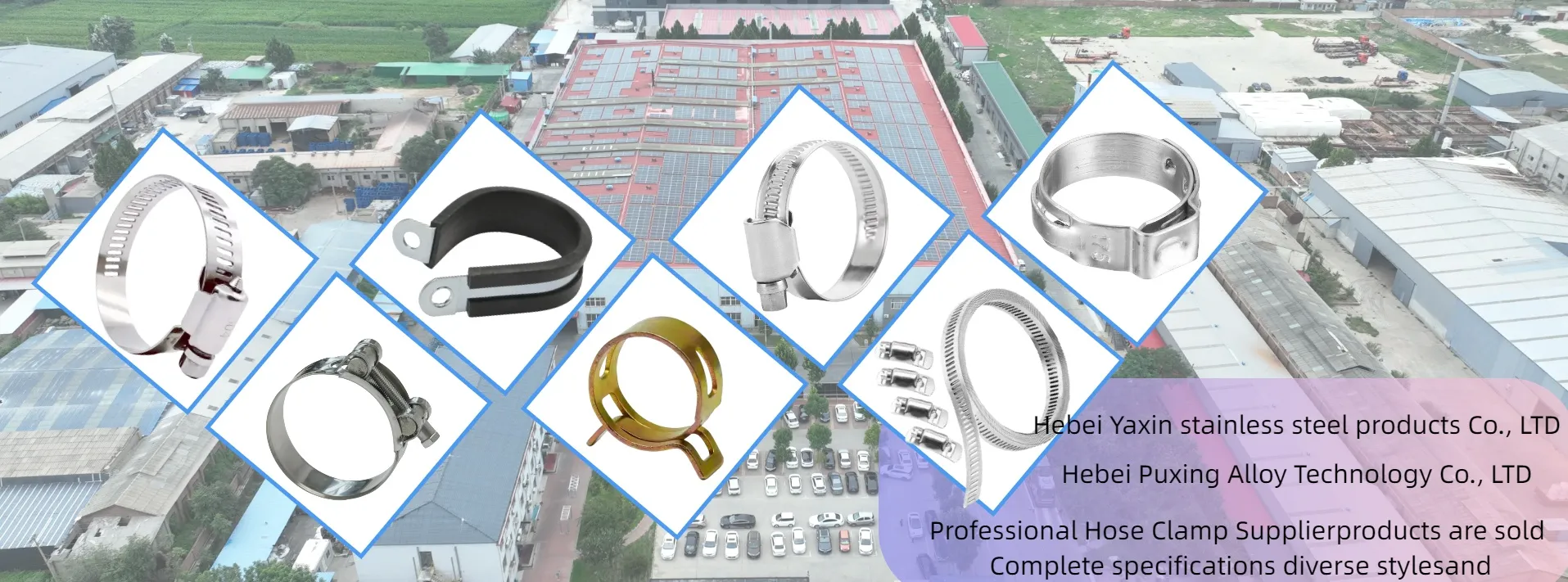- Phone:+86-17331948172 +86-0319-8862898
- E-mail: inquiry@puxingclamp.com
វិច្ឆិកា . 21, 2024 08:27 Back to list
spring hose clamps automotive
Understanding Spring Hose Clamps in Automotive Applications
In the world of automotive engineering, every component plays a critical role in ensuring the vehicle operates efficiently and safely. Among these components, spring hose clamps are often understated yet fundamentally important. These clamps are designed to secure hoses in place, providing a secure seal that prevents leaks and maintains optimal performance.
What are Spring Hose Clamps?
Spring hose clamps are mechanical devices made of spring steel that are used to hold hoses tightly against fittings or flanges. Unlike traditional hose clamps that require a screw to tighten, spring hose clamps utilize the inherent tension of the spring material to maintain a consistent force around the hose. This design allows for automatic adjustments as the hose expands or contracts with temperature changes, making them particularly useful in dynamic automotive environments.
Advantages of Spring Hose Clamps
One of the primary advantages of spring hose clamps is their ability to maintain a constant clamping force. As temperatures fluctuate, hoses may expand or contract, which can lead to loosening in standard screw-type clamps. Spring clamps, in contrast, adapt to these changes, ensuring a secure fit at all times. This feature is crucial in maintaining the integrity of the automotive cooling and fuel systems, where pressure fluctuations can be common.
Additionally, spring hose clamps are often easier to install and remove than their screw counterparts. Their design allows for quick application, which is beneficial in assembly line settings or when making repairs. Technicians can easily slide the clamp onto the hose and position it, without the need for tools to tighten.
spring hose clamps automotive

Applications in Automotive Systems
Spring hose clamps find extensive use in various automotive systems. Common applications include cooling systems, where they secure hoses connected to radiators, water pumps, and thermostats. In these systems, the ability of spring clamps to respond to temperature changes helps prevent leaks that could lead to overheating or engine failure.
Fuel delivery systems also make use of spring hose clamps. The constant clamping force ensures that fuel hoses remain secure under pressure, minimizing the risk of leaks that can pose serious safety hazards. In brake systems, these clamps help secure brake lines, ensuring that hydraulic pressure is maintained effectively.
Choosing the Right Spring Hose Clamp
When selecting a spring hose clamp for automotive applications, it’s essential to consider the size and specifications of the hose. Clamps are available in various diameters and spring tensions, allowing automotive professionals to choose the right fit for their needs. Additionally, ensuring that the material of the clamp is compatible with the fluids it will encounter is crucial to prevent corrosion and ensure longevity.
Conclusion
Spring hose clamps play a vital role in the automotive industry, ensuring that hoses remain firmly in place and preventing leaks that could lead to serious engine issues. Their ability to adjust with temperature changes and ease of installation makes them a preferred choice for many automotive applications. Whether in the cooling system, fuel delivery, or brake system, these clamps contribute to the overall safety and efficiency of vehicles. As automotive technologies continue to evolve, the importance of reliable components like spring hose clamps cannot be overstated, making them indispensable in the quest for optimal vehicle performance.
-
Mini Hose Clamp Manufacturer & Supplier Precision Hose Clamps Mini Clamp Factory
NewsJul.07,2025
-
High-Quality Steel Plate Midsole - Trusted Factory & Suppliers for Safety Footwear
NewsJul.06,2025
-
High-Quality Stainless Steel Slit Coil Supplier & Factory – Precision Slitting, OEM Service
NewsJul.06,2025
-
High-Quality Hose Clamps Mini Clamp – Reliable Factory & Leading Suppliers
NewsJul.05,2025
-
High-Quality Steel Plate Midsole Leading Steel Plate Midsole Factories & Suppliers
NewsJul.05,2025
-
Adjustable Pipe Tube Clip – High-Quality, Durable & Versatile Clamps for Industrial Use
NewsJul.05,2025




